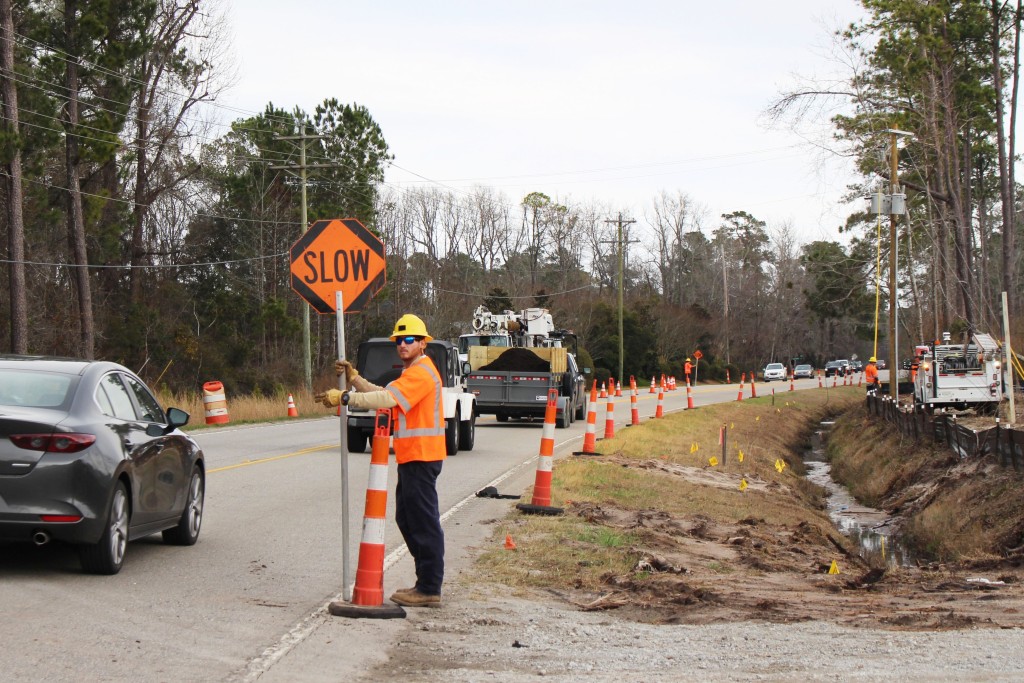Every year, workers along the side of the road are injured or killed when a car crashes into them, despite the work zone being marked with bright cones and warning signs.
There’s an easy way to reduce those incidents that harm first responders, road construction workers and utility crews. Slow down and move over. It’s good advice to keep people safe. It’s also the law in South Carolina and every other state.
In South Carolina, the law is clear. Work zones along roadways should be marked with cones, signage, barriers and other appropriate traffic control devices such as speed limit reduction. Driving recklessly through these zones or exceeding the speed limit can result in fines up to $5,000 and imprisonment, the severity of which depends on whether there is bodily harm or a fatality.
As Horry Electric’s motto states, “Safety is our first concern.” Protecting line crews is a top priority and it’s a safety measure everyone can help with.
“Our job is a very hazardous job; everything from the electricity we deal with on a daily basis to being exposed to the elements of Mother Nature,” says Chris Grainger, operation trainer. “Our job becomes even more dangerous when we fail to mitigate those hazards with proper training and equipment and using controls. The one thing we have no control over is the driver behind the wheel of a vehicle moving through our work zone. If you do your part, we will do ours to keep our employees and members safe.”
Electric utility crews are especially at risk. The temporary nature of power line repairs can surprise motorists. Utility work can be finished in a matter of hours, or it can take several months to complete.
“Most of our work is conducted on the side of roadways. Crews could be setting poles for new lines to be installed, replacing equipment on existing poles, or dealing with weather related issues that caused damage to our system,” says Brian Chestnut, safety coordinator.

A flagger is sometimes necessary for a road job. The flagger is one of our crew members, put in a visible area to control traffic. “South Carolina DOT (Department of Transportation) requires that if we encroach on or block a lane of traffic in any way, we must notify vehicles through signage and utilize a flagger, or flaggers in some cases, to direct vehicles around the work area,” says Chestnut.
It’s important to slow down if you see a crew in the roadway. “Slowing down saves lives,” says Burroughs Nobles, manager of operations. “If you are traveling too fast, you can’t react in the event something happens.”
An important fact to keep in mind – stopping sight distance increases with speed. “According to the sight distance table in the SCDOT Flagger Handbook, the sight-to-stop distance for a car traveling at 55 miles per hour is 495 feet. A car traveling at that speed will be completely through our work zone before they are able to stop, should something happen,” says Grainger.
We understand slowing down or stopping may add a few seconds or minutes to your commute, but at the end of the day, it’s a preventative measure that keeps everyone safe. “We can all do our part to protect ourselves and each other by slowing down and not being distracted by other things while driving,” Chestnut says. “We can all go home safe at the end of the day.”

